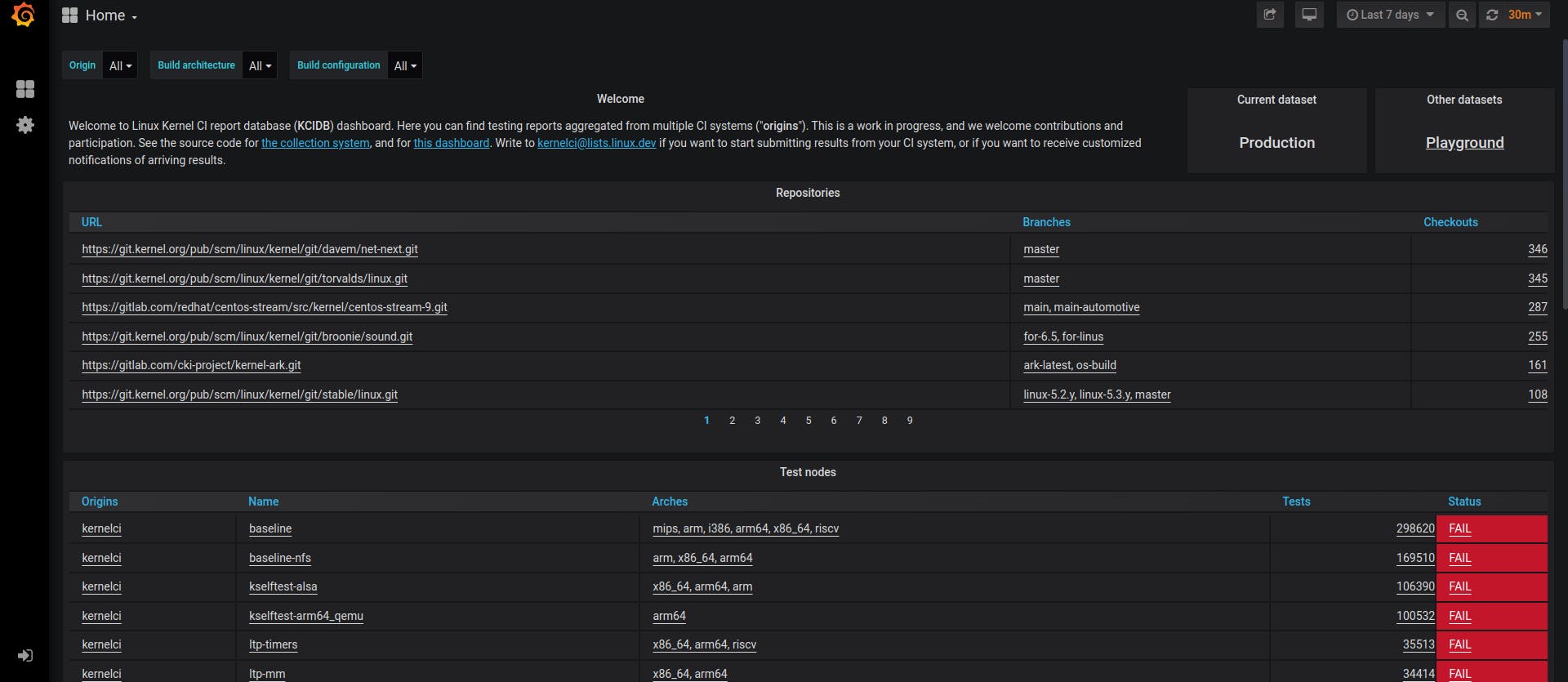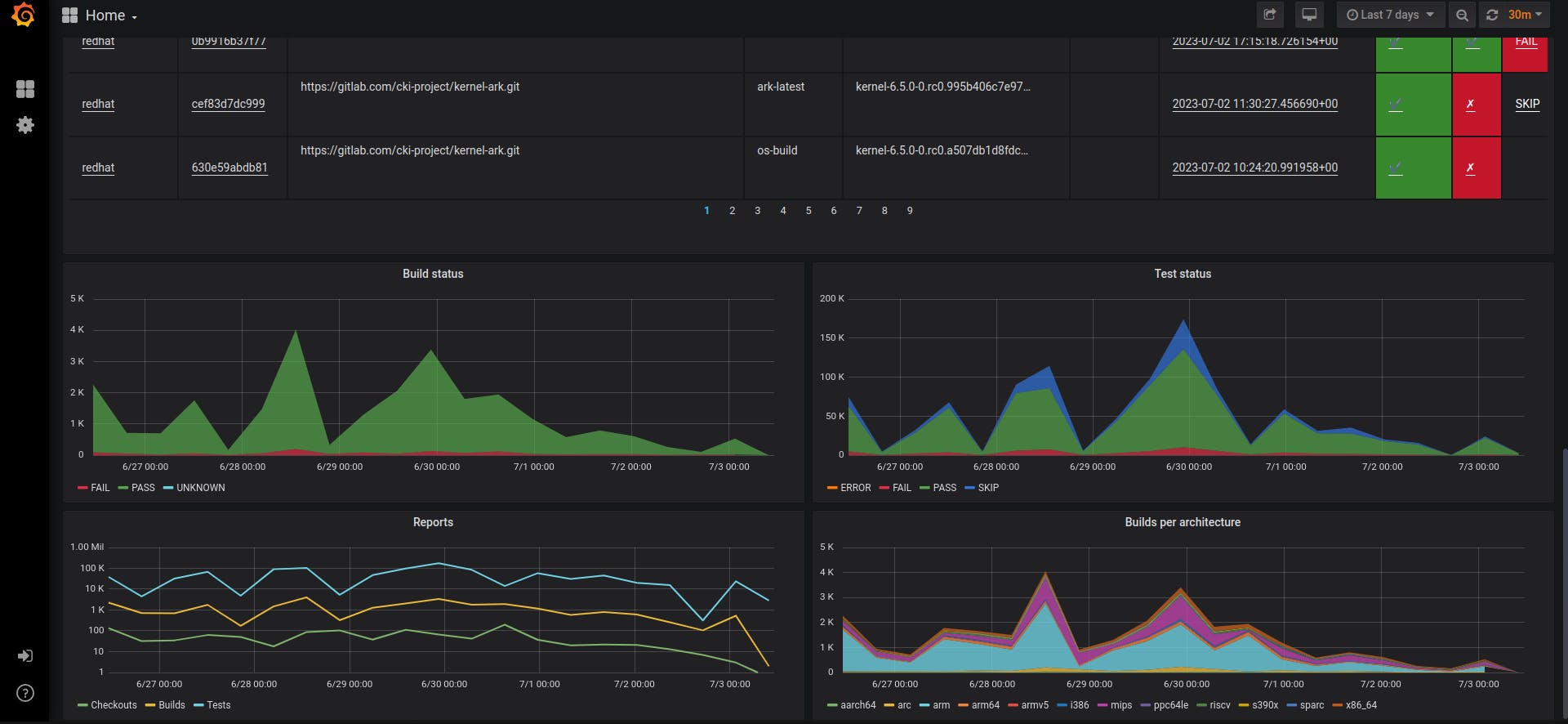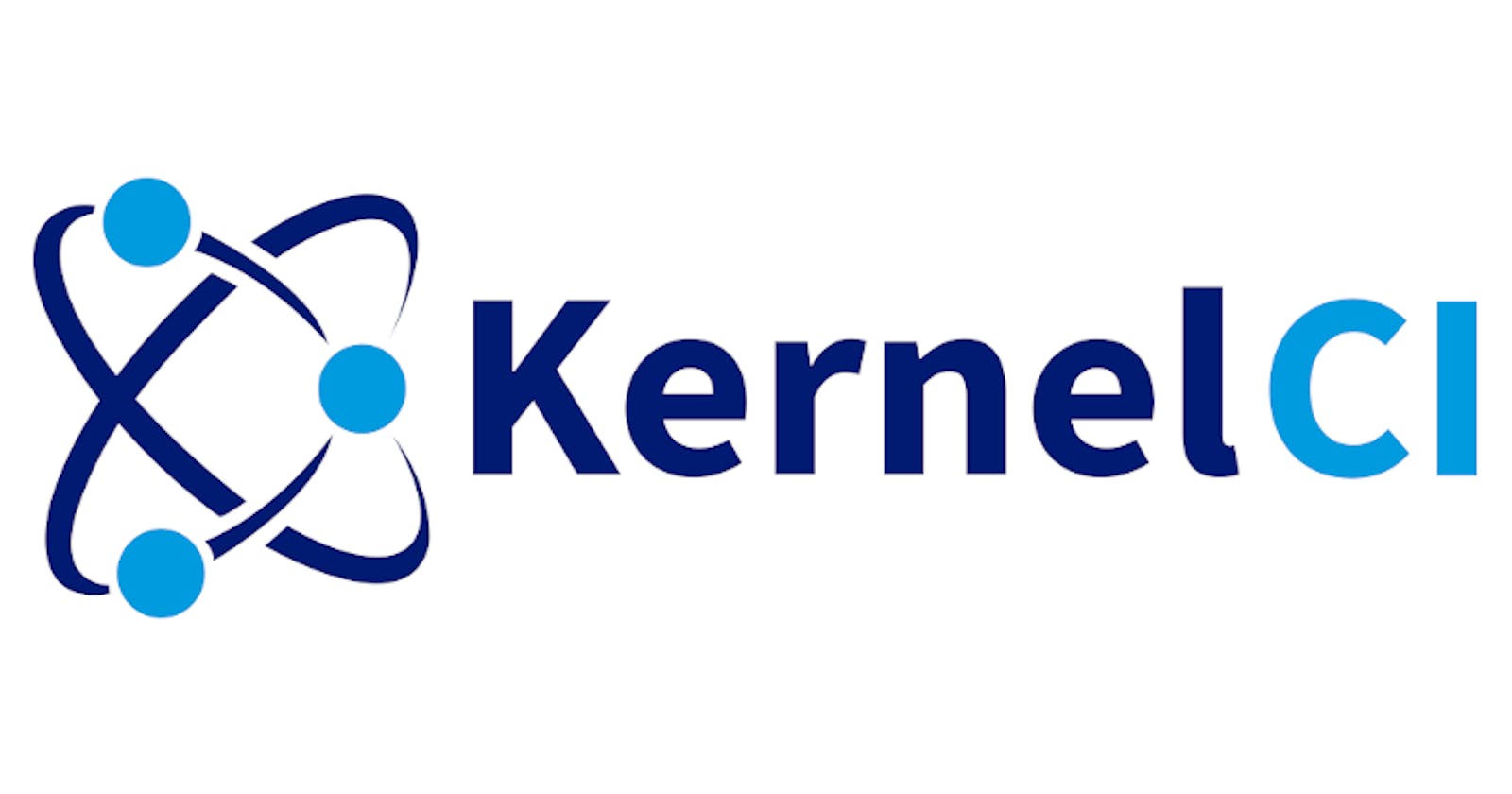Introduction
Welcome, This is my week#5 Outreachy blog post! In this blog post, we'll delve into the fascinating world of KCIDB, an essential component of the KernelCI project. Whether you're new to the open-source community or seeking insights into continuous integration testing for the Linux kernel, we're here to provide you with a comprehensive overview of KCIDB and its significance.
What is KernelCI?
KernelCI is an open-source community project with a primary focus on testing and validating the Linux kernel on a wide range of hardware platforms. Within KernelCI, KCIDB, short for Kernel CI Database, serves as a vital tool.

KCIDB: This project offers a web-based dashboard that showcases test results obtained from continuous integration testing of the Linux kernel. It acts as a centralized hub for collecting data from diverse test systems and hardware platforms. Its primary objectives are to monitor the health and performance of the kernel across various configurations and assist developers and maintainers in maintaining its quality.
Key Features and Functionality:
Test Result Visualization: KCIDB provides a user-friendly web interface that displays comprehensive test results. Through the dashboard, users can view and analyze the outcomes of various tests conducted on the Linux kernel.
Historical Data Analysis: KCIDB facilitates the analysis of historical data, allowing users to track trends, identify regressions, and monitor improvements over time. This capability assists in ensuring the stability, compatibility, and performance of the Linux kernel throughout its development lifecycle.
My Internship Task
My Internship task is to create an artifact mirroring system for KCIDB. Let me tell you what this means.
Currently, KCIDB relies on external systems to keep track of important links, such as build configurations, artifacts, logs, and patches related to the testing data it receives. However, in order to make the result triaging system better and ensure long-term archiving, KCIDB needs to step up and take charge of managing these files.
Our project involves implementing a background process that automatically downloads these artifacts and stores them in an S3-compatible object storage system. We will also maintain a mapping between the original links and the mirrored URLs in a database. By doing so, KCIDB will be able to perform in-depth result analysis and provide a reliable infrastructure for storing data over the long run.
The main aim of this feature is to guarantee the integrity and availability of artifacts, as well as to create a more effective system for triaging submitted results. Additionally, by maintaining a centralized storage system, KCIDB will improve the overall reliability and accessibility of testing data. All of these efforts will greatly contribute to the ongoing improvement and stability of the Linux kernel. Thanks to my mentors Nikolai Kondrashov and Tales Lelo da Aparecida with whom I am working to implement this feature. I am so grateful to have such amazing mentors.
The Importance of KCIDB
KCIDB is a package for submitting and querying Linux Kernel CI reports, coming from independent CI systems, and for maintaining the service behind that.
See the collected results on our dashboard. Write to kernelci@lists.linux.dev if you want to start submitting results from your CI system, or if you want to receive automatic notifications of arriving results.
KernelCI helps developers and maintainers identify and address issues promptly, ultimately enhancing the overall quality and reliability of the Linux kernel.
Below are some glimpses of the KernelCI KCIDB Grafana dashboard:


KernelCI organization GitHub link: https://github.com/kernelci
KCIDB project repository: https://github.com/kernelci/kcidb
Communication Links: Slack, Mailing List.
Conclusion
Congratulations once again on gaining a comprehensive understanding of KCIDB and its integral role within the KernelCI project. By exploring the KCIDB dashboard, leveraging its features for result analysis, and staying up-to-date with ongoing developments you can actively contribute to the Linux kernel's continuous integration and testing efforts.
Remember, the open-source community thrives on collaboration and knowledge sharing. Hope to see your contributions soon.
